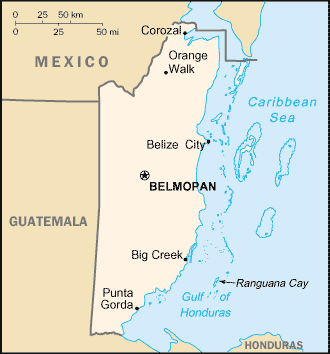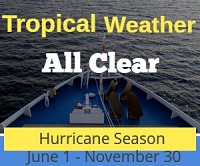Belize Crime Report
Crime Threats to Passengers traveling to Belize
Venice
Get to know our slice of Paradise - located on the SW Coast of Fl.
Attractions
Beaches
Canoe/Kayak
Boat Launches
Boat Charters
Fishing Charter
Fishing Piers
Historical Sites
Golf
Parks
Hotels
Relocate
Venice Map
Western Caribbean Port Calls
Belize
Cozumel
Costa Maya
Falmouth
Grand Cayman
Mexico
Montego Bay
Ocho Rios
Playa del Carmen
Progreso/Merida
Roatan
Roseau
San Tomas
Air Ambulance Services
Those with serious or life-threatening problems who need to be evacuated to the United States should contact Air Ambulance Professionals. Medical expenses in Belize can be costly. It is recommended to check with your insurance company to verify you have sufficient coverage before traveling to Belize.
Air Ambulance Professionals
Ft. Lauderdale Executive Airport
Hanger 36B 1535 S. Perimeter Road
Ft. Lauderdale, FL 33309
Tel: 800-752-4195; 954-491-0555
Fax: 954-491-6114
www.airambulanceprof.com
For those traveling in the more remote areas of Belize or to the off-shore cayes, they should take note that emergency transportation to adequate medical facilities may be problematic. Astrum Helicopters provides MEDEVAC flights in coordination with the Belize Emergency Response Team (BERT). For emergency response and transportation, BERT is Belize’s only qualified provider.
Astrum Helicopters
Mile 3.5 Western Highway
Belize City, Belize
Office: +501-222-5100
Fax: +501-222-5105
www.astrumhelicopters.com
Belize Emergency Response Team (BERT)
P.O. Box 1370
1675 Sunrise Avenue
Coral Grove Area
Belize City, Belize, Central America
Tel: +501-223-3292
Cell: +501-610-3890
Fax: +501-223-0549
Email: info@bertbelize.org
Getting around
Road Safety
Road conditions are generally very poor at best and hazardous at worst. The primary highways, Northern, Western, and Hummingbird (southern) highways, are in generally better condition (paved) than most roads, but these are still very narrow, two-lane highways. The highways are infrequently lit, only occasionally have shoulders, and driving can be very dangerous, especially after dusk and during the frequent rain.
Public transportation can be problematic and unreliable. Taxi stands or plazas are located throughout major cities and villages and can be contacted by phone. Certain basic rules and precautions apply. Do not accept rides in vehicles that are not authorized taxis (taxis have green license plates, but perhaps few other markings), and do not ride in a taxi with occupants than just the driver. Taxis should generally only be hailed from reputable locations such as hotels and restaurants. It is always preferable to travel with an acquaintance. There have been reports of sexual assault on unaccompanied females committed by taxi drivers. Public buses in Belize are prone to safety and security problems and should be avoided. Buses are in poor operating condition, and drivers are often observed exceeding the speed limits and passing other vehicles at locations where it is unsafe to do so. Water taxis are often overcrowded and lack basic safety equipment.
ports > destinations > belize > Belize Crime
Belize is a country located on the north eastern coast of Central America. Belize is bordered to the north by Mexico, south and west by Guatemala, and to the east by the Caribbean Sea.
Many of the safest places in Belize are the off-shore cayes (islands), which are some of the major tourist destinations. While crime still exists on the cayes, it is much less frequent and generally non-violent. Crime on the cayes is generally petty and crimes of opportunity that target tourists or more affluent long-term residents.

Much of the reported crime in Belize occurs on the main land, and 2011 saw a rash of violent criminal incidents in the north and west of Belize. In January 2011, a Swedish tourist was robbed at gunpoint in Belize City. She had cash and her passport stolen. In September 2011, an American female was raped and robbed after bicycling on the Stann Creek district highway. In August 2011, an American female was robbed and briefly held hostage in her home in the Cayo district by local men who stole nearly $6,000 worth of jewelry and electronics.
Belize offers an immense variety of tourist destinations, many of which are located in remote parts of the country. The easy pace found in Belize can lull one into forgetting that criminals will work wherever and whenever it is to their advantage. Tourists have been robbed while visiting archeological sites, and occasional violent crimes have occurred at resort areas on both mainland Belize and the cayes. Illicit activities in remote areas can quickly involve the innocent tourist. It is prudent to assume that safety procedures and requirements at tourist destinations are not up to U.S. standards and careful consideration given prior to engaging in the activity.
Crime Threats
Crime has been on the rise in Belize for the past several years. Belize remains a high-crime country due largely to the extremely high murder rate per capita. Belize is officially the sixth most dangerous country in the world with an average of just over 39 homicides per 100,000 residents. Belize has the second highest murder rate in the Caribbean, the third in Central America, and the fifth in the Americas. Belize set new national records for murders in 2009 and 2010. Gang violence, still largely confined to Belize City, is a significant contributor to the high murder rate. There were 125 murders recorded for 2011, four less than 2010, likely due to the gang truce in Belize City that began in September 2011. However, even though the number of murders dipped, ending a three-year trend of new records for murders, the murder rate actually increased slightly, due to a slight decrease in the population.
The number of murders in Belize recorded so far in 2012: 100 (as of Sept 5).
A government of Belize (GOB)-supported gang truce was agreed to in September 2011 and dramatically reduced the intentional homicides during the final four months of 2011. There were also highly-publicized raids in known gang areas by the Gang Suppression Unit (GSU). There were only nine murders reported in the 100 days following the truce. The gang truce will undoubtedly have an impact on violent crime in Belize City in 2012.
In 2011, Belize experienced the spread of violent crime to the north and west of the country. Previously, the majority of violent crime largely occurred in the poor and violent southwest of Belize City. The remainder of the country had remained generally immune to the shocking levels of crime confined to the geographically tiny community in Belize City. The spread of violent crime to the north and west has been a significant development. There were 14 murders reported in the north in Orange Walk and 17 murders reported in Belmopan, San Ignacio, and Benque in the west. Several murders have been linked to home invasions, which are a permanent fixture of criminal life in Belize. An American businessman, Lawrence Johnson, was brutally murdered in Cayo in November 2011 during a home invasion.
Belize has also become the popular destination of choice for fugitives fleeing the criminal justice system in the United States. In 2011, 14 fugitives were located, arrested, and expelled to the United States by the Regional Security Office in joint operations with the Special Branch of the Belize Police Department.
Criminal perpetrators remain emboldened and are not deterred by the risk of confrontation.
Belmopan City, home to the U.S. Embassy since 2006, located in the Cayo District in the center-west of the country, experienced increases in violent criminal activity. Two separate diplomatic missions were targets of break-ins. Local Chinese-owned businesses were also the target of violent crimes. A local restaurant, located less than a mile from the U.S. Embassy, was robbed in November, and the storeowner was shot. Another storeowner in Belmopan killed a known Belize-city gang member as the perpetrator fled his store after robbing it. These crimes are taking place in a city with a population of just 13,000.
The majority of crimes are “property” crimes such as robbery, theft, burglary, muggings, and pick-pocketing. In 2011, Belize experienced a reported increase in rapes, burglaries, and regular thefts. However, there was a decrease in reported robberies. Often decreases are attributed to simply a lack of reporting of these crimes.
Criminal perpetrators regularly carry firearms although the number of firearms seized in gun-related crimes declined by about four percent in 2011. In the past several years, Belize has had multiple incidents of high-powered military precision firearms falling into the hands of criminal elements. There have also been credible reports of gang members acquiring and using grenades in attacks in 2008 and 2009. There were no attacks involving grenades in 2011, but local law enforcement is fearful that grenades may still be in the arsenals of some of the larger, more established gangs. In October 2011, the most significant incident to date occurred when 42 weapons were stolen from the Belize Defense Force (BDF) headquarters in Ladyville. These weapons included M-16 and M4 rifles along with 9mm pistols. Besides a significant embarrassment to the BDF, this incident represented a clear and present danger to all military, local law enforcement, and citizens of Belize. To date, only six weapons have been recovered. In 2009, a Belize Defense Force (BDF) M16 was stolen by a BDF member and sold to a well-known drug dealer in Belize, who was apprehended in February 2010 in possession of the weapon.
Source: Overseas Security Advisory Council (OSAC)







